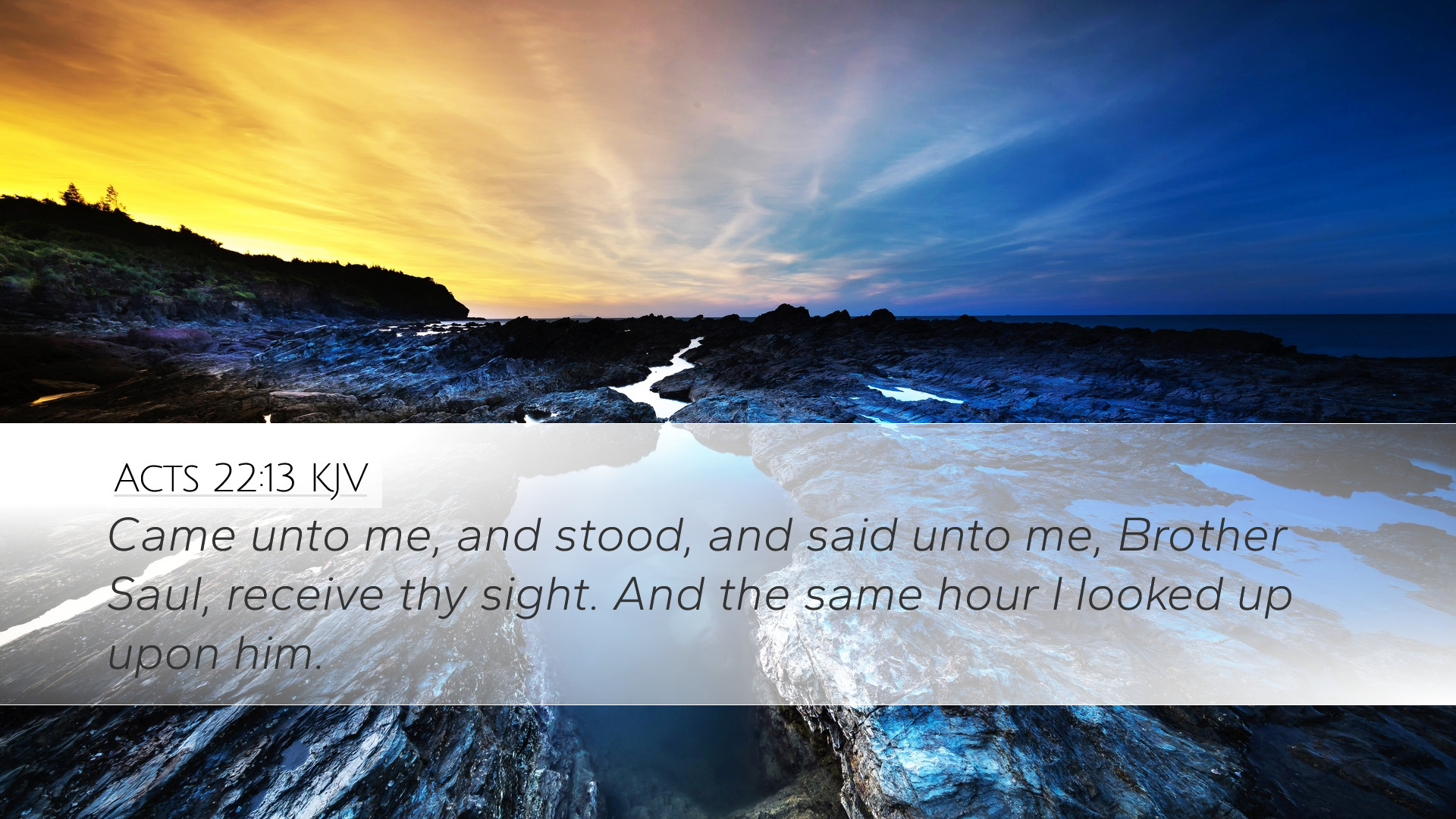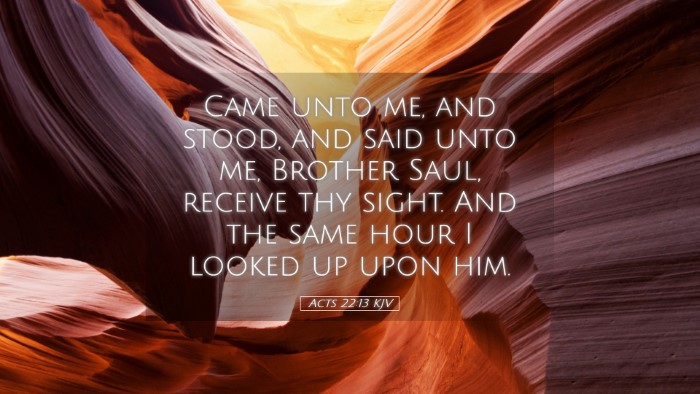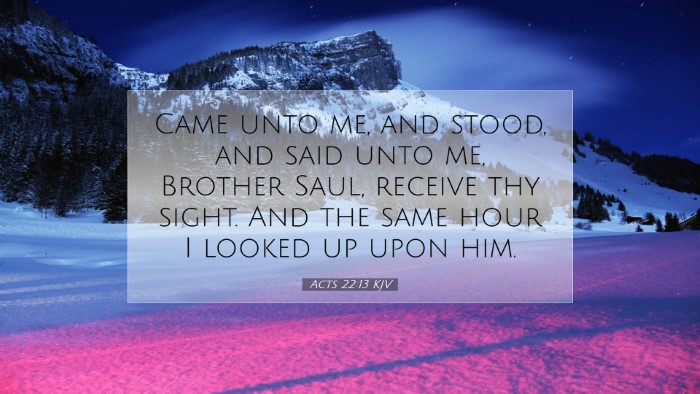Commentary on Acts 22:13
Acts 22:13 records a pivotal moment in the Apostle Paul's conversion experience. The verse states:
"Came unto me, and stood and said unto me, Brother Saul, receive thy sight. And the same hour I looked up upon him."
This verse illustrates the personal and transformative nature of Paul's encounter with Jesus.
Introduction
The account of Saul's conversion is vital for understanding the early Church and the immense impact of one individual’s transformation. Acts 22:13 serves as a focal point within the broader narrative of the Book of Acts, emphasizing the grace of God that leads to repentance and spiritual awakening.
Contextual Background
Leading up to this verse, Paul recounts his dramatic journey from a fervent persecutor of Christians to a dedicated apostle. He was a man of zeal, education, and determination who believed he was serving God by imprisoning Christians. The experiences that followed his encounter on the road to Damascus transformed him into one of the greatest proponents of the Christian faith.
The Encounter with Ananias
In Acts 22:13, we find Ananias, a disciple in Damascus, being sent to Paul. Theologically, this moment supports the notion that God uses individuals in ministry to reach others. Ananias represents the obedient servant, willing to overcome his fears to fulfill God's command.
Matthew Henry's Insight
Matthew Henry emphasizes the vital role Ananias played in Paul's restoration of sight. He notes that Ananias’s obedience is commendable and reflective of genuine faith. Henry suggests that "God often employs humble instruments for significant purposes" and views Ananias as a type of faithful servant. His willingness to approach Paul highlights the extraordinary nature of divine grace at work.
Albert Barnes’ Commentary
Albert Barnes elaborates on the text’s significance, highlighting that the phrase “Brother Saul” indicates the warmth and acceptance in a moment that could have been filled with fear and suspicion. ... Barnes points out the transformation from enmity to fraternity in Christ — a theme central to the message of reconciliation inherent in the gospel. The use of “Brother” suggests immediate unity in the faith community despite past hostilities.
Adam Clarke's Reflection
Adam Clarke's commentary contemplates the physical restoration of sight as symbolic of spiritual illumination. Clarke associates physical blindness with spiritual ignorance and interprets Ananias’s action as emblematic of God’s unfailing mercy and grace. The recovery of sight in "the same hour" signifies not only a miraculous healing but also the immediacy of divine action amidst human helplessness.
Theological Implications
The encounter between Paul and Ananias underscores several theological themes:
- Grace and Mercy: Paul, once a persecutor, receives grace not based on his merit but solely on God's mercy.
- Restoration: Ananias's ministry epitomizes the church's role in healing and restoring its members.
- Identity in Christ: The address "Brother Saul" signals the new identity Paul finds in his relationship with Jesus.
Application for Believers
Acts 22:13 serves as an encouraging reminder for pastors, students, and theologians about God's redemptive power. The transformation of Paul teaches that no one is beyond the reach of God's grace. Every believer is called to be an agent of reconciliation, akin to Ananias, participating in God's restorative mission in the world.
Practical Lessons
From this verse and its surrounding context, several practical lessons emerge:
- Obedience to God’s Call: Like Ananias, believers must be willing to step out in faith, even when faced with uncertainty.
- Forgiveness and Acceptance: The Christian community is called to embrace even those with painful pasts, fostering love and acceptance.
- The Importance of Spiritual Sight: Just as Paul’s physical sight was restored, believers must seek to grow in spiritual discernment and understanding.
Conclusion
Acts 22:13 captures the essence of transformation experienced through an encounter with Christ. As highlighted through the insights of renowned commentators like Matthew Henry, Albert Barnes, and Adam Clarke, we see that God’s work often unfolds through ordinary followers who respond to His call. The beauty of this verse lies not only in the physical restoration of sight but also in the broader narrative of redemption it represents for all believers.


